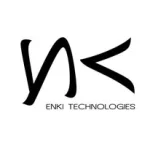
HR represents part of the capital of the company, an investment that brings many benefits. The abilities, experience, and knowledge of each employee contribute to the growth and development of the company. Talented people can get added value to the enterprise.
Briefly, the value of human resources consists of:
- knowledge (theoretical knowledge),
- skills (eg. ability to use a computer program);
- experience;
- attitudes (eg. commitment, pro activity);
- belief in the company and its leadership.
The way we manage human resources is significant. Competent and effective management can bring plenty of advantages to the company.
“Human Resources Management involves the establishment and execution policies, programs and procedures that influence the performance, capabilities and loyalty of the employees of an organization. Individuals are attracted, retained, motivated and developed to perform the work of the organization through these policies and procedures” (Clardy 1996)
“A highly effective HR system is one that emphasizes staff performance in every aspect of the system, is internally consistent, and perhaps most importantly is aligned with the strategy of the organization.”
A company with a highly qualified and constantly learning staff is more likely to achieve higher returns than at places where workers cannot develop. Accordingly, the employees are the most valuable resource, which increases the competitiveness of the company. Therefore, it is essential to improve their skills continuously. The investment in “human resources,” although it is generally expensive, at the same time is highly profitable.
“HR is a strategic asset because it can play a critical role in both strategy implementation and management systems. Namely, the ability to execute strategy well is a source of competitive advantage, and “people” are the linchpin of effective strategy execution.” (Becker, Huselid & Ulrich 2001).
Forms and methods of improving staff should be tailored to the needs of a particular group or each employee, the scale of operations, and organizational solutions established in the company. The most common improvement method is training. The improvement process can be considered part of the company’s incentive system, as employees often treat training as a reward or opportunity for professional development. In addition, continuous development of qualifications can help a company increase its competitiveness in the market through its progress.



